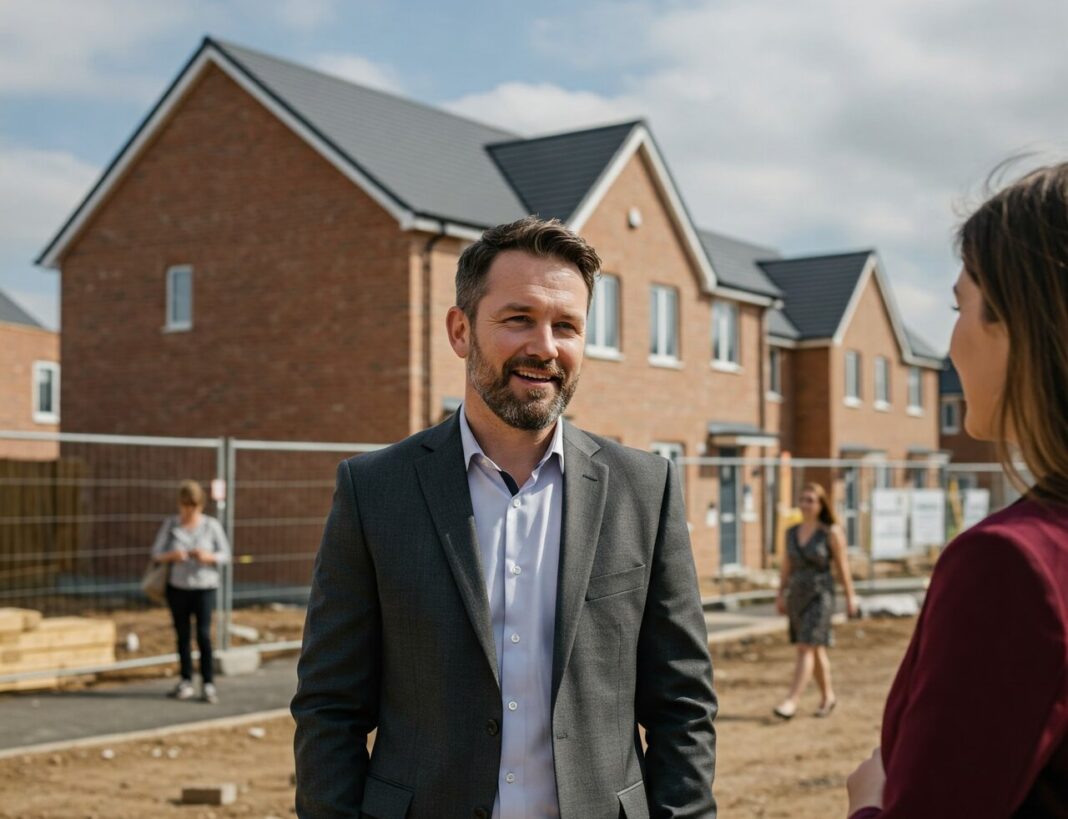A growing disparity in the UK property market is emerging, with housebuilding momentum accelerating in Scotland and the North while London continues to falter, according to a new report by the NHBC and property investment firm Heligan Group.
Figures from NHBC show that seven of 12 UK regions saw an increase in new housing registrations in 2024, with particularly strong performance in the North and Scotland.
By contrast, London experienced a steep 48% fall, attributed largely to financial strain among affordable housing associations.
These groups, which have long played a critical role in providing new stock in the capital, are now scaling back acquisitions amid rising costs, exacerbating the housing shortage across London and the Southeast.
PLANNING PERMISSION SLOWDOWN
The slowdown in planning permissions in these high-demand areas is now feeding through to the supply pipeline, while regions such as the Midlands and Northwest look set to benefit from stronger development momentum in 2025.
New analysis from Heligan Group highlights several structural pressures behind the uneven geography of development. Chief among them are borrowing costs, which have surged as a result of higher gilt yields.
These rising yields have increased both senior development loan rates – now ranging between 6.5% and over 10%, depending on borrower profile – and mezzanine debt, which often exceeds 12%. Bridging finance remains prohibitively expensive, with monthly costs between 0.7% and 1%, equivalent to 8–12% annually.

Sam Lewis, Head of Debt Advisory at Heligan Group, says: “Rising yields have compressed development margins by lowering Gross Development Value (GDV).
“Many developers have needed to reassess project feasibility, particularly in commercial sectors, where financing has become harder to secure without pre-lets or public sector anchor tenants.”
The cost burden is falling most heavily on smaller developers, who lack the scale advantages enjoyed by national housebuilders.
While the top 10 developers saw only a 4% decline in housing starts in 2024, smaller firms suffered a 36% drop.
With construction optimism dampened by global uncertainty and planning delays, many developers are mitigating risk through phased builds, equity funding, or a pivot to build-to-rent models.
“Developers are dedicating more time to strategy and less to on-site delivery, which is ultimately impacting the total number of homes being built.”
Lewis adds: “Developers are dedicating more time to strategy and less to on-site delivery, which is ultimately impacting the total number of homes being built.
Purpose-built student accommodation (PBSA) has bucked the wider trend in some areas, particularly in cities such as Manchester and Birmingham, where university partnerships and institutional backing have underpinned recent projects. However, the sector remains dependent on forward funding and is now constrained by mounting value conservatism among lenders.
“PBSA remains in a growth phase,” says Lewis, “although growing value conservatism is starting to limit the quantum of lending available.”
PANDEMIC STRUCTURAL SHIFT
Commercial property markets continue to reflect pandemic-era structural shifts. Hybrid working has left secondary offices with persistently high vacancy rates, while demand for prime space – particularly in central locations or near life sciences clusters – remains solid.
Speculative office developments are now rare unless anchored by public tenants or strong pre-lets, and the retail sector continues to wrestle with long-term changes in consumer behaviour.
“In the commercial property space, there are increasingly fewer deals that are working well for all parties, but we’re seeing more innovative structures emerging,” says Lewis.
Across the board, deal-making is being slowed by a widening gulf between developer expectations and lender valuations.
CAUTIOUS LENDING
While developers base pricing on forward-looking projections and assumed recovery, lenders remain cautious, favouring historic comparables and backward-looking appraisals.
Lewis says: “Lenders are taking a cautious, backwards-looking approach, while developers base valuations on future potential and market recovery. This disconnect is making it harder to secure funding, particularly for residential and regeneration schemes, pushing developers towards alternative finance and delaying project delivery.”
While tighter monetary conditions are beginning to ease, the Heligan report warns that sluggish GDP growth and wary consumer sentiment will continue to weigh on completions, with housing delivery expected to remain in the low 200,000s this year. Inflation is moderating – material costs are stabilising – but persistent labour shortages are likely to keep construction inflation around 3% in 2025, falling to 2% in 2026.
Looking ahead, regional performance is expected to diverge further.
“Regionally, the Midlands, North, and parts of Scotland should outperform in development, while London’s housing supply remains constrained by financial uncertainty among housing associations,” Lewis says. “Commercial investment will focus on prime offices and life sciences hubs, while secondary office markets and retail remain weak.”










